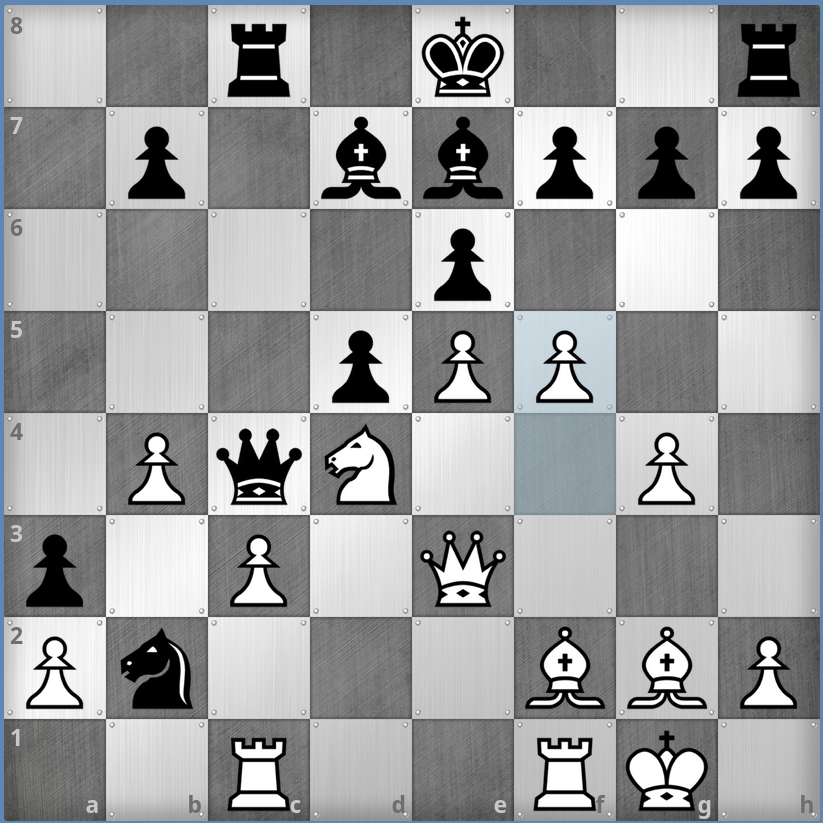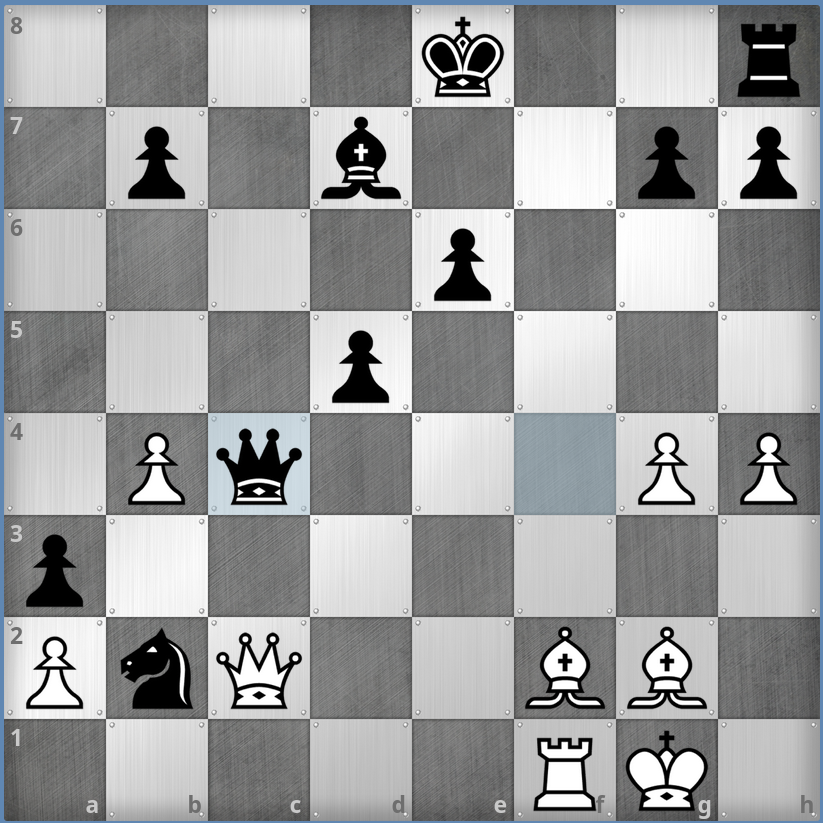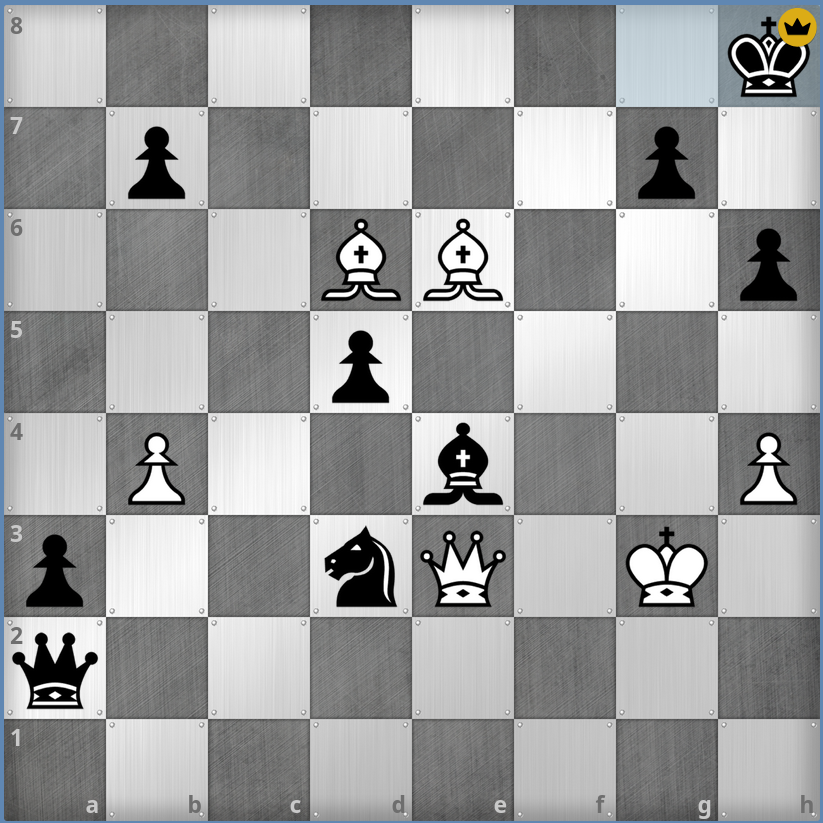2024 World Chess Championship Game 1 Analysis
My (very amateur) take on the first game of the 2024 World Chess Championship.
A brief account of the circumstances of the match
This match has been discussed heavily in chess circles ever since Gukesh Dommaraju won the 2024 Candidates Tournament to have a shot at becoming the youngest World Chess Champion in history. The defending champion, Ding Liren, having lost a significant number of rating points and stature among the top grandmasters in the world due to poor tournament performances, was considered to be an underdog going in, especially after the form shown during the Candidates Tournament and since then by Gukesh D.
None of that means anything once the clock starts and the first move is made, of course, and I’ll do my best to provide whatever insight I can. Please keep in mind that I am not a titled player (unless you count Correspondence Chess Expert from a few years back) and thus my analysis could very well be incomplete and/or incorrect.

Game 1: Gukesh D (White) vs. Ding Liren (Black)

1.e4 e6 2. d4 d5 3. Nc3 Nf6 4. e5 Nfd7 5. f4 c5
Black went with the French Defense in this opening game and after move 5 we can already see that White has established a pawn center and is aggressively pushing on the kingside, while Black aims to counter on the queenside. With the center likely to become clogged with parallel pawn chains similar to the King’s Indian Defense, both players are already assembling their forces to attack on what they both believe will be the decisive part of the board.

6. Nce2 Nc6 7. c3 a5 8. Nf3 a4 9. Be3 Be7 10. g4 Qa5
No captures as of yet, and White has built a nice pawn chain from b2 to e5, pointing firmly at Black’s kingside. Black had a chance to castle on move 10, but decided not to, likely figuring that castling into the teeth of the opponent’s potential attack is not a good idea. In positions like this, the kings might castle to the opposite sides of where the opponent is directing their attack. However, the risk in doing so in a position like this is that a lot of pawns have already moved on Black’s queenside and White’s kingside, so castling there..might not be the best of ideas. Thus, the kings remain in the center for now.
Black’s pawn chain (f7 to d5) points at the queenside. If you’re not sure where your opponent is going, look at their pawn chain and it will (usually) point the way. If you want to attack on a certain side of the board, forming a pawn chain in that direction can be useful for gaining space and getting squares to stage an attack from.
Also notice how both sides are getting their pieces into position to attack on their target sides. Even more noteworthy is Black’s a-pawn, which has marched to a4 and is currently backed by the queen and the a-rook. Keep an eye on this pawn..

11. Bg2 a3 12. b3 cxd4 13. b4
This is the turning point of the game, in my opinion. After the Black a-pawn can go no further, White starts an aggressive counterpush with their b-pawn, including 13. b4, driving the queen back. However, this offensive has created an outpost square on c4 for Black. White has a very nice outpost on d6 that a knight would have the potential to become a very strong attacker from. Black has a similar square on e4, but as we will see, c4 is the crucial square in this game. (I’ve been studying pawn structures and positional chess lately, and this concept came immediately to mind as I went through this game.)
Also note how 12..cxd4 pokes a hole in the pawn chain and how the b-pawn push makes the c-pawn the new base of the chain.

13..Qc7 14. Nexd4 Nb6 15. O-O Nc4
After driving the queen back, White regains the pawn and castles. Yet, a Black knight has found a home on c4 and White can do nothing to immediately dislodge it as the light-squared bishop is stuck on g2..and if White manages to trade that bishop off on c4, Black’s other knight is poised to reclaim it. (Something like Re1, Bf1, Bxc4, etc. though White might not have time for positional improvement if Black can get their attack going.)
Positionally, the board is still rather clogged up but White is having trouble getting their kingside attack started while Black continues making improvements on the queenside. White’s bishops in particular aren’t having any fun while Black’s have more potential.

16. Bf2 Bd7 17. Qe2 Nxd4 18. Nxd4 Nb2
This was the first move that I really didn’t understand at first..why give up that great square and put the knight near the corner, deep in White’s territory and only supported by the a-pawn? The next few moves would make it clear, though. Before this, Black got their light-squared bishop to a better position while the sides traded knights on d4. White’s knight there has a decent outpost, but nothing to attack at the moment.

19. Qe3 Rc8 20. Rac1 Qc4
Ah, the knight was clearing the way for the queen to take that square. Also note that both sides have put rooks on the c-file due to the importance of the c4 square. Black is starting to get a nice attack built up while White doesn’t have anything near the Black king..who is still chilling in the center, not having castled..but there’s no need right now.

21. f5 Qd3 22. Qe1 Bg5 23. Rc2 Rc4 24. h4 Bf4
In this sequence, White continues to push on the kingside while Black offers a queen trade. (That I don’t understand, as the rule is that, usually, the attacking side wants to keep the queens on the board, but I’m sure Liren had his reasons.) White refuses the trade, so the dark-squared Black bishop joins the party, pointing at the queenside from the kingside. White adds pressure to the b2 knight, so Black’s c-rook becomes the newest occupant of the cushy digs on c4. Note how this square is being used as a way station for Black’s pieces to join the attack..and White can’t stop it. After 24. h4 Bf4, Black’s pieces are far superior to their counterparts, who are all passive and defending. None of them are close to Black’s king, who has not even remotely been threatened yet. He and the h-rook are currently watching from afar, feeling fairly confident their forces will bring home a victory.

25. Qb1 Rxc3 26. Rxc3 Qxc3 27. fxe6 fxe6 28. Ne2 Qxe5 29. Nxf4 Qxf4 30. Qc2 Qc4
Here, Black wins a pair of pawns thanks to their increasingly strong position, which makes it easy to simplify. Note how 27..fxe6 opens the f-file for future use by the currently lounging h-rook. White tries a knight fork with 28. Ne2 but ends up losing the aforementioned second pawn. Black offers to trade queens again, which makes total sense now. The knight on b2 has been a thorn in White’s side, controlling the vital c4 square and d3 and d1, making those squares untouchable for use by White in attack or defense.

31. Qd2 O-O 32. Bd4 Nd3 33. Qe3 Rxf1+ 34. Bxf1 e5 35. Bxe5 Qxg4+
White again refuses the queen trade. Then, on the 31st move, Black finally castles but it’s to attack the f-file with the newly activated rook. The Black knight gets back into an active role, hitting the f2 square along with the previously idle rook. Thus, 33. Qe3 to give that square more support. After the rooks are traded, Black shoves the bishop out of the way with 34..e5 and gets the pawn back right away with 35..Qxg4+. White is totally lost here, but Gukesh decided to play on a bit longer.

36. Bg2 Bf5 37. Bg3 Be4 38. Kh2 h6 39. Bh3 Qd1 40. Bd6 Qc2+ 41. Kg3 Qxa2 42. Be6+ Kh8 0-1
As the game wound down, White charged their pieces forward in sheer desperation, while Black calmly defended and kept the pressure on, culminating in the game’s only discernible tactic, the double attack 40..Qc2+ followed by 41..Qxa2. This makes the a3 pawn, star of the early game, into a passer that White cannot prevent from queening without heavy material loss. After getting their only check in, White resigns, never having come close to getting a significant attack going.
In closing
Ding Liren played magnificent positional chess here, perhaps in a similar manner to my favorite world champion, Tigran Petrosian. (He was also known as “Iron Tigran” due to his strong defensive and positional play. Not that he couldn’t unleash a tactical onslaught if the board called for it..) The first game of a World Chess Championship match usually ends in a draw as the players feel each other out, but Liren took advantage of Gukesh’s overreach on the kingside and how he allowed him to establish c4 as an outpost and attack point. (Hilariously, the chess.com analysis calls 12. b4 a “great move” solely as it gets a pawn back without bothering to notice the significant weakness that it created. One of the important lessons I’ve learned about positional chess lately is that it is the art of making your pieces superior to their counterparts..without capturing them and thus ‘silently’ improving your position. Pieces absolutely can become stronger or weaker than their given weight in pawns depending on where and how they are placed.) lichess didn’t mark that move at all, though it lowered White’s engine score a bit.
Both engines gave Liren high marks for accuracy (95.8 and 97, respectively) though they both thought 27..fxe6 was an inaccuracy and capturing with the bishop was better, but I think that Liren was already thinking about castling and using that pawn capture to open the file for use by the rook. Also, chess.com thought 23..Rc4 was a mistake as it wanted Black to castle instead..but there was no need to and why not put another piece on that square? lichess thought it was a fine move in its own quiet way.
This match is far from over, despite the unexpected win for Liren as Black. It is a best of 14, so the first to get 7.5 points is the winner. Should they both finish with 7, then tiebreakers will ensue.
I don’t know if I’m going to do this for every game of this match, but this was a lot of fun to analyze a game without an engine and just go on my observations. I know I missed a lot of things, but I think I got the main idea of the game and hopefully expanded upon it in a useful way.

(All art on this page by Jasmine at myfurryart.com)
(All chess diagrams are from the chess.com analysis page)